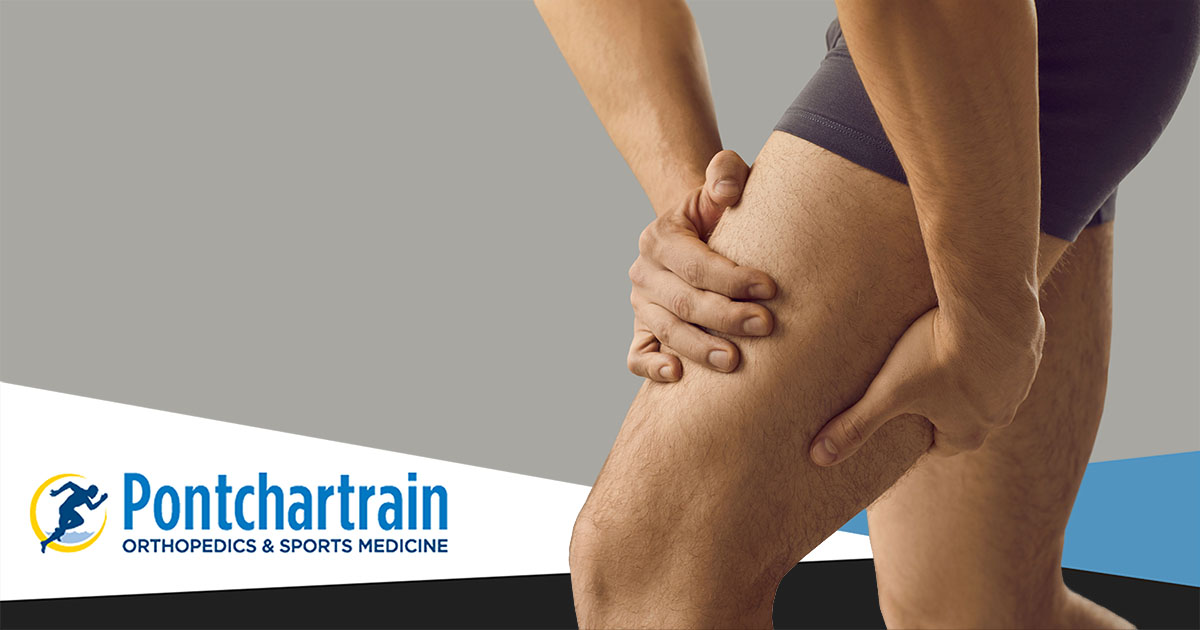Muscle Tear

A muscle tear, also known as a muscle strain or pull, refers to soft tissue damage that has been done to a muscle or its tendons. Injuries to the muscle and tendons can also involve some of the surrounding structures including nerves. These injuries can range from mild to severe, and can alter function if not treated properly.
How do Tears in Muscles Happen?
Muscle tears can happen when a muscle is overstretched to the point that the muscle is damaged. This can occur when a person is doing daily activities or heavy lifting as well as from sports activities. These tears can be partial or complete, depending on the severity of the injury. When a complete muscle tear occurs the entire muscle is torn or detached from the tendon. Injuries to the muscle-tendon unit can cause immense pain due to their extensive blood and nerve supply.
How are Tears Diagnosed?
There are three levels of tears or strains, each increasing in intensity. In a Grade 1 strain, the muscle fibers are stretched beyond their usual length. Stress or pain may not be felt in a Grade1 strain until the activity that caused the injury is completed. While there may be some tightness during the activity, pain is not felt until the activity is over and the muscle is relaxed. A Grade 2 strain occurs more quickly and may even be immediate. This injury occurs when some of the muscle fibers are torn and some are stretched beyond their normal length. There is pain when the muscle is stretched and it is sensitive to touch but no gap can be felt. A Grade 3 is the most severe and often results in a complete tear of the fibers. Some patients report a feeling of the muscle tearing apart. There may be a lump or bruising where the tear has occurred. Often a palpable gap in the muscle can be felt.
What are the Treatment Options for Muscle Tears?
Depending on the severity of the injury, there are several treatment options available for those suffering from a muscle tear.
Grade 1 Tear
At Pontchartrain Orthopedics and Sports Medicine, we usually recommend treating minor Grade 1 muscle tears with rest and ice in conjunction with over-the-counter pain relievers and anti-inflammatories. Patients with muscle tears will also be instructed to perform rehabilitation including stretching the muscle to promote proper healing.
Grade 2 Tear
In addition to the rest and ice in conjunction with over-the-counter pain relievers associated with a Grade 1 injury, Grade 2 muscle tears may require physical therapy to properly recover.
Grade 3 Tear
Severe Grade 3 muscle tears may require surgical intervention to heal properly. Some other specialized treatments for moderate to severe muscle tears include Ultrasound Guided Injections. These injections are sometimes used to treat muscle tears because they effectively target a precise area and are able to reduce inflammation, which enables a tear to heal more effectively. Regenerative therapies may also be used to treat muscle tears because they stimulate the patient’s body to create new, living, functional tissues to treat injuries which may otherwise heal slowly, or not at all.
Patients who believe they have torn a muscle should schedule an appointment to determine the severity of their injury. Only then can an appropriate treatment plan be determined.
